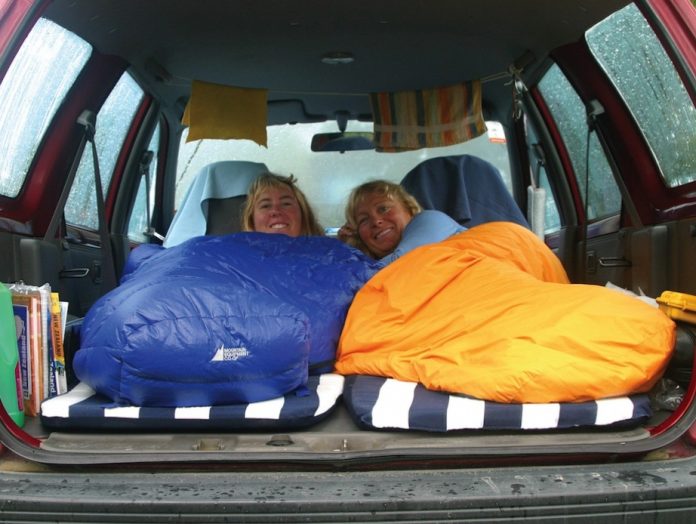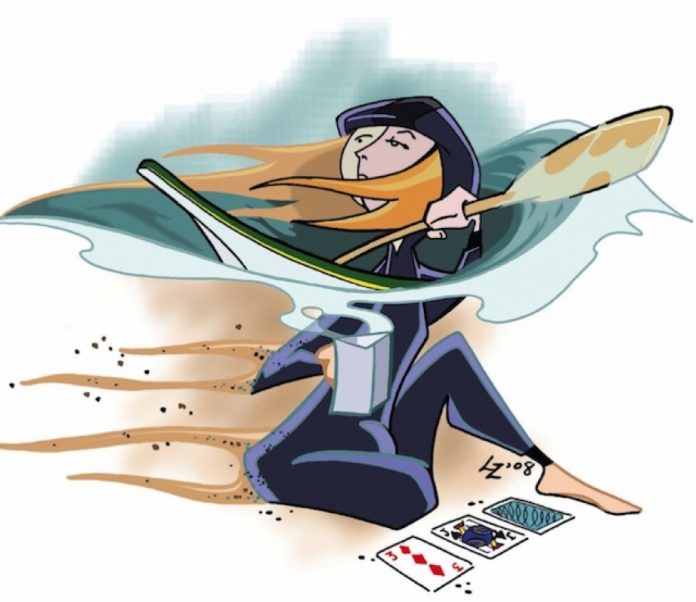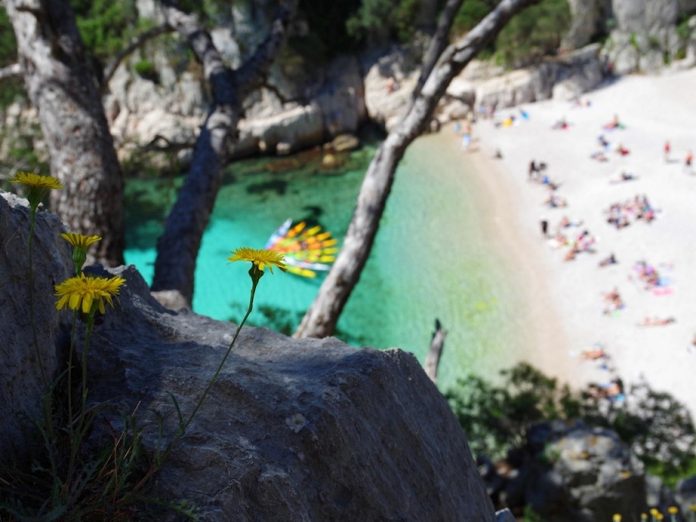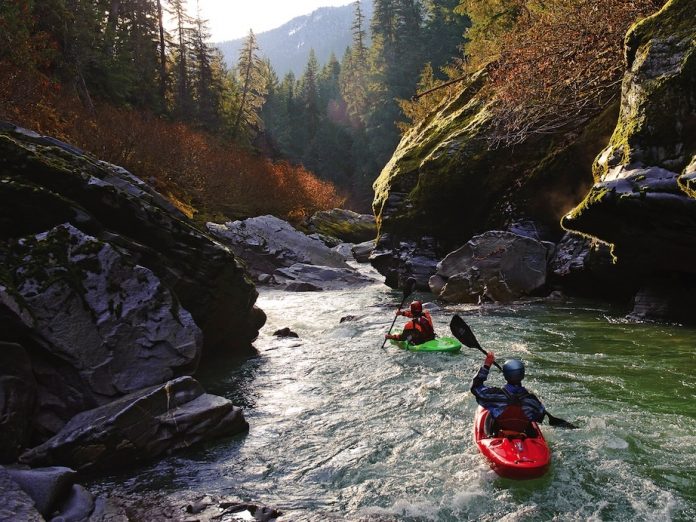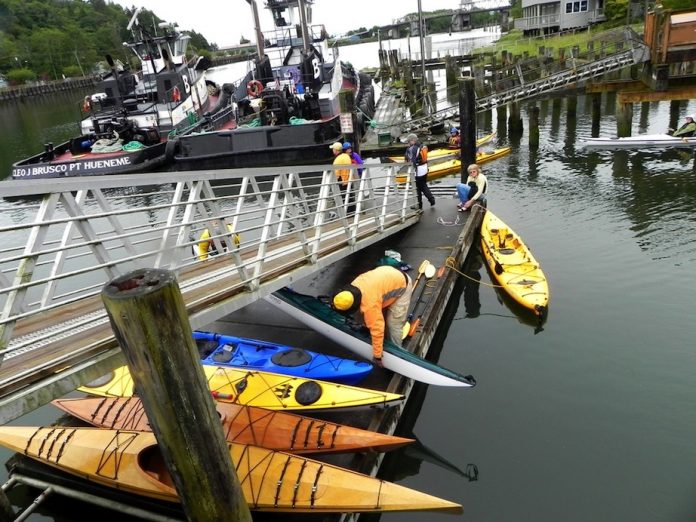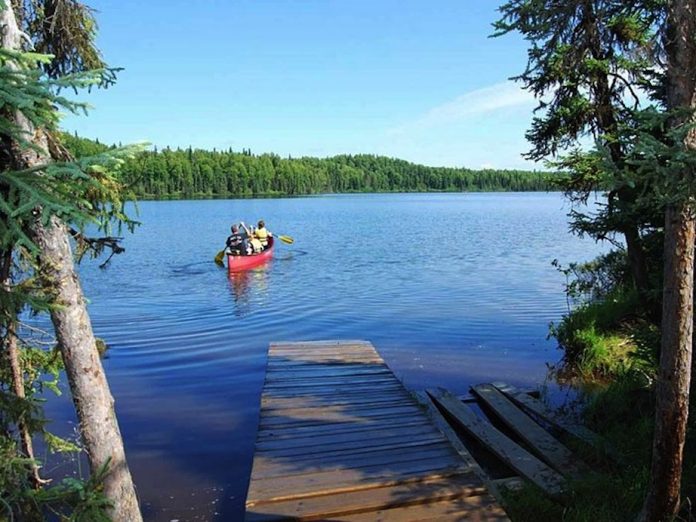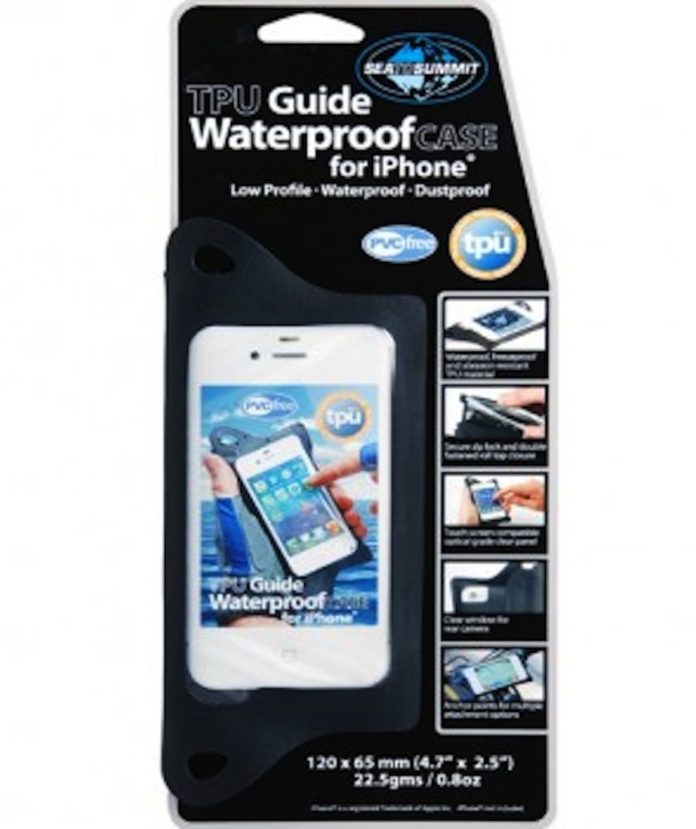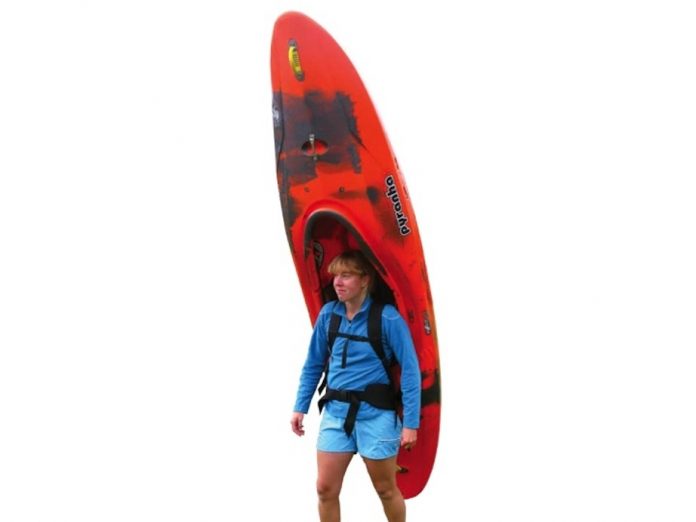“Yup, it does get breezy in these parts.” The launch guard’s weathered face splits into an ironic grin beneath his thick white whiskers.
Espousing understated commentary on the state of the weather seems to be the sole raison d’être for this riverside hermit, as he soon disappears back into the sun-baked, vintage Airstream that rests by the put-in. In the canyons of southern Utah, “breezy” seems to be the local meteorological term for gale-force winds and three-storey dust devils. I reflect on the forecast I had seen the night before; the familiar symbols for sun, clouds, and rain were replaced by the image of a wind turbine.
A twinge of failure seems to accompany any retreat before nature. We have invented high-tech materials to shield us from the sun’s UV rays and protect us from extreme cold, making it possible to extend our paddling pursuits throughout the year and brave fiercer conditions. Yet there remains one element that we Gore-Tex–sporting kayakers are unable to tame. Wind. Blowing the bow spray into our faces and buffeting our paddle blades as we reach to catch the next wave crest. Tearing our eyes and obliterating the voices of our companions.
Powerful, relentless, and unpredictable, the wind is a leading risk for any paddler. Often wind is the catalyst in a chain reaction of mishaps that can lead to paddling calamity. Strong winds can create treacherous waves, and poor judgment about whether or not to head out in these conditions can be the proverbial straw to break the camel’s back. Case in point is an accident in British Columbia’s Howe
Sound that made headlines last October when two men died of hypothermia after capsizing in two-metre seas and 85-kilometre-perhour winds. The incident occurred while the experienced adventure racers were completing a training session that involved paddling to an island, running to the summit, and then returning to mainland by kayak. The wind had picked up by the time the men finished their run, but they set out anyway. A maritime coordinator of the rescue centre later told reporters, “The weather conditions were forecasted. They were known. It was a poor choice.”
Adrenalin-charged adventure racers and under-prepared neophytes are not the only ones who find themselves in trouble when the wind rages. Some of the most preventable accidents and near misses befall experienced paddlers on multi-day trips. Overconfidence with one’s skills, complacency with a familiar area, or a desire to “make the miles” are typical factors. More often than not, we are trying to avoid that helpless feeling that results from being windbound.
Sea kayaking manuals are forever promoting the idea that wind days are somehow a blessing rather than an inconvenience. Being windbound, we are to believe, is something that kayakers should be grateful for; a matchless opportunity to explore the coast from shore, read a book, or socialize with trip mates.
From my experience, however, this optimism is little more than cheerful self-delusion. Playing rummy on the beach while the waves race past is about as satisfying as attending a track and field event on a pair of crutches. It is most likely that you will spend your wind day trapped on a small swath of beach hemmed by impregnable forest, itching to go paddling.
If fate has provided you with a sandy campsite, all of your food will rapidly achieve the consistency of Gojo. Forget casserole or chicken a la king, the taste du jour is grits. Worse, your formerly perennially good-natured trip companions will be just as frustrated and shorttempered as you. If it’s raining and windy, spirits will plummet faster than the barometer.
No, the real merit in taking a wind day is that it is the smart and responsible thing to do, no matter how irksome. The Howe Sound incident occurred around noon; by mid-afternoon, the weather had calmed down. Tragically, if the men had sacrificed their training session and rested on shore for a few extra hours, they might still be alive. Sometimes the boldest decision is that which chooses safety over adventure.
In the Utah Canyonlands, I thank the launch guard for his conversation. My companions and I decide to make camp and wait for the wind to abate. In our meagre shelter beneath an embattled cottonwood, we attempt a game of cards. The wind does its best to sandblast the clothes from our bodies, and eventually we retreat to the cramped confines of our tents. It may not be as exciting as trying to paddle further, but I am sanguine in my surrender to the wind. After all, a little boredom and discomfort never killed anyone.
This article originally appeared in Adventure Kayak, Fall 2008. Download our free iPad/iPhone/iPod Touch App or Android App or read it here.



